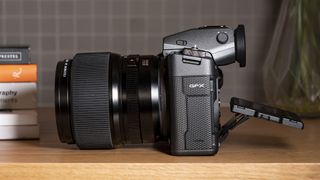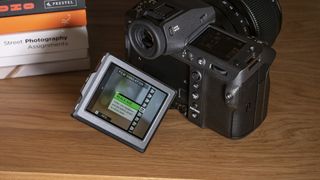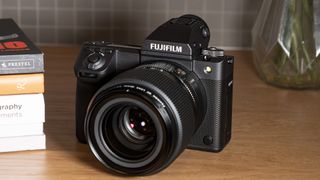Fujifilm GFX100 II finally makes medium format cameras feel as fast as full-frame
The star of Stockholm at this week’s Fujifilm X Summit is undoubtedly the Fujifilm GFX100 II, which has been unveiled as the company’s latest flagship mirrorless medium format powerhouse.
It aims to take power Hasselblad X2D 100C as the best medium format camera around, and in a cheeky move on Fujifilm’s part, it was put on display in the Swedish camera maker’s backyard.
The Fujifilm GFX100 II retains everything that’s great about medium format; class-leading 102MP photos, yet adds serious power under the hood to match the kind of fast performance we expect from smaller cameras like Fujifilm’s own X-T5 or X-H2.
Fujifilm GFX100 II Price and release date, plus three new GF lenses
The Fujifilm GFX100 II will be available from September 26 with a suggested retail price of $7,499 / £6,999, with the grip priced at $499 / £479. That’s somewhere between the launch prices of the GFX100 and GFX100S, and about what we’d expect given the camera’s features.
In addition to the GFX100 II, Fujifilm has announced three new medium format GF lenses: the GF 55mm F1.7 R WR priced at $2,299, and two tilt-shift lenses, the GF 30mm F5.6 TS ($3,499/£3,499) and the GF 110mm F5.6 TS ($3,999 / £3,999).
Fujifilm was unable to provide pricing for Australia at the time of writing.
The camera features excellent phase detection autofocus, including people and animal tracking, 8-stop built-in image stabilization and 8 fps continuous shooting for more than 1,000 JPEGs. It’s performance you’ve never seen before from a medium format camera, and it’s super impressive, especially considering the large file sizes the GFX100 II produces.
The GFX100 II is the successor to the GFX100, with next-level performance in virtually all aspects, and has the same form factor as the smaller one GFX100S, but with the option to expand it and improve battery life using a new vertical grip, while an optional EVF accessory can add a tilt function to the removable 9.44 million-pixel EVF, which offers the best seeker yet could be. Is this the future of medium format?
Next generation speed
Medium format can provide a higher level of image quality, but the traditional trade-off is much slower performance compared to the best mirrorless cameras with smaller full-frame or cropped sensors. Normally we’re looking at limited continuous shooting speeds and slow autofocus, but the GFX100 II looks to change all that by evolving the series to make it suitable for a wider range of photography and video scenarios.
The new 102 MP sensor is paired with Fujifilm’s X Processor 5 for faster performance, including the same phase-detection autofocus performance with human and animal subject tracking as Fujifilm’s own X-T5 and up to eight stops of internal stabilization, which is two stops better than the GFX100.
It’s no action camera, but 8fps continuous shooting for over 1,000 JPEGs when recording to a CFExpress card is nothing to sniff at. Considering the massive file sizes, it’s an impressive feat, in line with enthusiast cameras with smaller sensor sizes – and we haven’t even started on video.
There are too many video features to sensibly list here, but highlights include 8K/30p (with 1.51x crop), 4K/60p and Full HD 120p, with F-Log 2 color profile offering 13+ stops delivers dynamic range at ISO 800, and up to 14 stops using dynamic range priority, plus useful tools including waveform and vectorscope.
We also get the latest addition to Fujifilm’s film simulation catalog: Reala Ace. It’s a soft, natural yet rich look, examples of which you can see in our hands-on Fujifilm GFX100 II review.
Analysis: a powerhouse… for whom?
With the fastest performance we’ve ever seen in medium format, the GFX100 II is a powerful mirrorless camera in every sense. It’s also reasonably priced considering what you get for your money – even if it’s unaffordable for most people – while the design offers the best of both worlds: the smaller chassis of the GFX100S, with the option to expand it further for easier vertical shooting and better battery life, which has already increased by around 20% despite using the same WP235 battery used in other GFX cameras.
This could be the most capable camera we’ve seen in this format, and be truly usable outside of controlled environments like the studio. However, I wonder who buys GFX cameras? It is a format traditionally used by professional photographers who shoot on film in the studio; yet here we have a medium format camera that steps into the future, and looks like it will hold its own among the best mirrorless cameras. Those who can afford to buy the Fujifilm GFX100 II should be treated to a great shooting experience and excellent images; heck, they can even try video while they’re at it.



